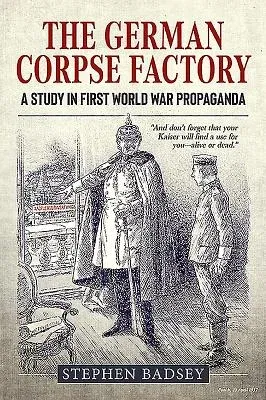The German Corpse Factory is one of the most famous and scandalous
propaganda stories of the First World War. It has been repeated many
times down to the present day as the prime example of the falsehood of
British wartime propaganda. But despite all the attention paid to it,
the full story has never been properly told. In Spring 1917, parts of
the British press claimed that Germany was so short of essential fats
and glycerin that the German Army was being forced to boil down the
bodies of its own dead soldiers, causing a brief scandal of accusation
and counter-accusation, including the claim that the story was the
invention of the British official propaganda organizations. Behind the
scenes, British propaganda experts opposed exploiting the story as it
was obviously false, and contrary to their basic principles of never
telling an obvious lie in an official statement. But at the time, the
British government refused to deny that the 'German Corpse Factory'
might really exist. In 1925 the scandal re-erupted in New York, when the
former head of British military intelligence on the Western Front, in
the United States on a speaking tour, was quoted in newspapers as having
confessed to making the whole German Corpse Factory story up, a claim
that he immediately denied. As a gesture of friendship on the occasion
of the Locarno treaties, the British government now accepted the German
government position that the story was a lie, but in fact neither
government knew what had really happened in 1917. This book provides the
answers to these questions according to the best historical evidence
available. It uses the scandal of the 'German Corpse Factory' as a
case-study to explore the true nature of British official propaganda and
its organizations in the First World War, including the events of 1917
and who might really have been responsible for the story. It also shows
how this brief episode was taken up by the German government after 1918,
and by interest groups in Britain and the United States after 1925, to
paint a false picture of British propaganda, with far-reaching
consequences for the peace of Europe, and for our subsequent
understanding of the First World War.

